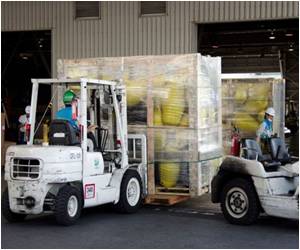Oysters destined for a sprinkling of lemon juice and a delighted diner are pulled from the majestic Chesapeake Bay, where 20 years ago they had nearly disappeared.

Today, the mollusk's reintroduction is playing a vital role in the health of the bay and Petty is quick to point out the dual ecological and gastronomical benefits.
In recent summers, Petty says, he could not see much in the water at his farm in southeastern Maryland, because of a thick algae that thrived in the region's sweltering summers.
But last year "all summer long, I was able to see the bottom, which means the oysters were filtering and cleaning," he said, talking to AFP at a cove near the small community of Hollywood.
The eastern oyster, or Crassostrea Virginica as it is known scientifically, was once abundant in the Chesapeake, one of the world's largest estuaries and a major US waterway.
But it nearly disappeared here at the end of the 20th century due to overfishing, disease and pollution.
Advertisement
Two decades ago, no more than one percent of the stocks that had existed in the Chesapeake a century earlier remained in the bay.
In addition, the mollusk can clean 200 liters of water a day, which basically makes it "the kidney of the bay."
The oyster's reefs also provide shelter for other animals such as fish, mussels and especially blue crabs, the pride of the state of Maryland and Chesapeake.
- 'Nutty' with 'cucumber finish' -
Maryland and Virginia, the two states that border the Chesapeake, have in recent years launched rescue programs, creating sanctuaries and giving subsidized loans to develop oyster farms.
Over the course of 10 years, ORP reintroduced 4.5 billion oysters, along with a recycling program for empty shells to serve as nurseries for larvae.
Virginia saw 10,000 tons of oysters collected during the winter of 2012 to 2013, double the year before and twenty times more than 15 years ago, although it represents only one percent of what was collected in the 1950s.
Petty created his company Hollywood Oyster and left his job in finance five years ago to embark on his Chesapeake Bay venture. He never looked back.
Baseball cap on head and cell phone to the ear, Petty takes orders from wholesalers and local restaurants from his boat.
"We're growing the operation because of the demand," he says.
"Two years ago, I started a million and a half oysters, last year I started almost 3 million oysters and this year I started almost 4 million," he said.
"We are really lucky that chefs and customers love the taste profile of this cove, this is very, very good oyster water" he said, describing his oysters as having "a nutty taste with a cucumber finish."
And thanks to American consumers' growing fondness for shellfish and local products, oysters are coming back into fashion.
The Oyster bars that flourish in nearby Washington promote the local Chesapeake oyster with gusto.
Tony Kowkabi, owner and manager of Catch 15, an oyster bar that opened three months ago a stone's throw from the White House, says it is a logical choice for his menu.
"Chesapeake Bay oysters are delicious, we are in the neighborhood, it makes sense for one of the best oysters in the country to be on my list," he says.
Source-AFP












